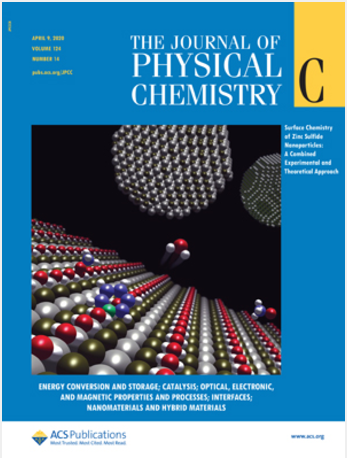Ultrafast Dynamics of Plasmon-Coupled Excitons in Semiconducting Nanoplatelets
IF 3.3
3区 化学
Q2 CHEMISTRY, PHYSICAL
引用次数: 0
Abstract
Exciton-plasmon coupling in nanomaterials produces many relevant phenomena for photonics applications including increased light-matter interactions, enhanced radiative rates of quantum emitters, and coherent energy exchange. In the case of exciton coupling to surface plasmon polaritons (SPPs), dispersive interactions controlled by the wavevector of optical excitation create the opportunity for tunable optical emission. Strong temporal impacts on exciton lifetimes can also occur in coupled systems, creating the opportunity for ultrafast control of exciton lifetime via changes in electronic coupling magnitude to a dispersive SPP. The coupling strength can be impacted by the morphology of the nanomaterials. Here, we utilize colloidal semiconductor nanoplatelets deposited onto thin silver plasmonic films, and compare the results to semiconductor quantum dots deposited on the silver films. We map the dispersion of the coupled systems and measure the ultrafast transient absorption response of the coupled systems. Due to the larger interaction areas of the nanoplatelets that lie flat on the silver films, a greater degree of coupling is found for the nanoplatelets, and much faster temporal responses are found as compared to quantum dots. Fresnel theory calculations that incorporate heavy and light hole features can reproduce the dispersion of the nanoplatelet-silver film, and a simple three-state model is developed to provide insights into the nature of the coupling at different photon energies along the dispersion curve.

求助全文
约1分钟内获得全文
求助全文
来源期刊

The Journal of Physical Chemistry C
化学-材料科学:综合
CiteScore
6.50
自引率
8.10%
发文量
2047
审稿时长
1.8 months
期刊介绍:
The Journal of Physical Chemistry A/B/C is devoted to reporting new and original experimental and theoretical basic research of interest to physical chemists, biophysical chemists, and chemical physicists.
 求助内容:
求助内容: 应助结果提醒方式:
应助结果提醒方式:


